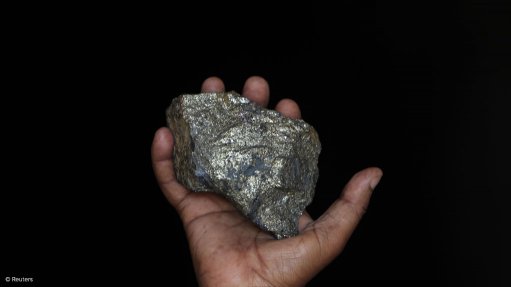
COBALT CONCERNS
Children living in the mining district had ten times as much cobalt in their urine as children living elsewhere
Photo by: Reuters
Cobalt mining comes at a great cost to public health in the Democratic Republic of Congo (DRC), states a new study by Belgium university Katholieke Universiteit (KU) Leuven and the DRC’s University of Lubumbashi.
In a statement on the university’s website last week, KU Leuven Department of Public Health and Primary Care toxicologist Professor Benoit Nemery noted that the research revealed that children were particularly vulnerable, as their urine and blood samples contained high concentrations of cobalt and other metals.
About 60% of the world’s cobalt is sourced from the mineral-rich Katanga Copperbelt, in the DRC. Researchers believe that cobalt mining takes a high toll on the miners and the broader environment.
The two institutions collaborated in 2009, with research recording high concentrations of trace metals in the urine of people living close to cobalt mines. The new case study, published last month in the online natural and social sciences journal Nature Sustainability, explores some of the health risks of cobalt mining.
The field study provides “novel and robust empirical evidence that the artisanal extraction of cobalt that prevails in the DR Congo may cause toxic harm to vulnerable communities”. This strengthens the prevailing sentiment that the currently existing cobalt supply chain is not sustainable.
The field study was conducted in Kasulo, an urban neighbourhood in Kolwezi. Nemery noted that when cobalt ore was discovered beneath one of the houses, the entire area became an artisanal mine. The residential area is now interspersed with dozens of mine pits and the majority of the residents still live in the area.
Mine dust, containing cobalt and other metals, is the major concern. The researchers collected blood and urine samples from 72 Kasulo residents, including 32 children. A control group with a similar composition was selected in a neighbouring district.
Nemery stated the results of study were worrisome. “Children living in the mining district had ten times as much cobalt in their urine as children living elsewhere. Their values were much higher than what we would accept for European factory workers. This study may be limited in scope, but the results are crystal clear. The differences cannot be attributed to coincidence.”
While the long-term consequences of increased exposure to cobalt are not clear, Nemery is not optimistic. “Cobalt is less toxic than other metals such as lead, cadmium or arsenic. But we found increased concentrations of several other metals as well. Furthermore, we found more DNA damage in children living in the mining area than in those from the control group.”
Additionally, he noted that the preliminary results of an ongoing study suggested that mineworkers’ new-born babies were at an increased risk of birth defects.
Further research was necessary, and Nemery commented that there were no silver bullets for this problem. “Simply banning artisanal mining in the DRC is not a good option, because the industrial mines usually leave a lot to be desired as well. So, unfortunately, sustainable cobalt mining in the DRC is still a utopia.”